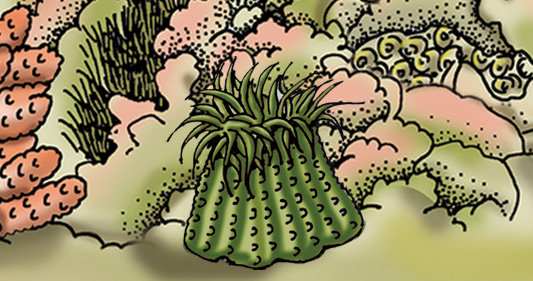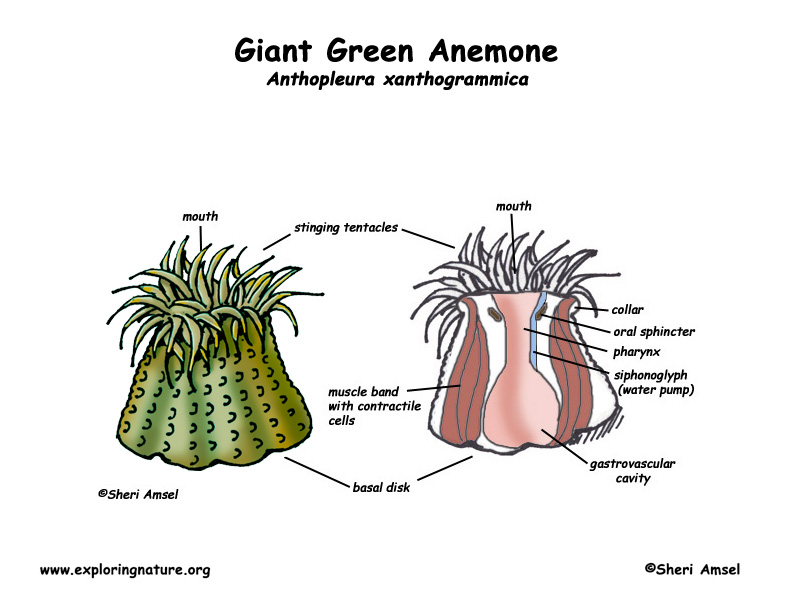

They are found from Alaska to South America (Panama).
They live in tidal pools on sandy and rocky shorelines, in areas where they are covered with water most of the time.
Their body is shaped like a column and is bright green in the sunlight. They can grow 6" wide (17 cm) and a foot tall (30 cm) with a 10-inch wide (25 cm) crown of tentacles. Tentacles grow in rows around the crown, often 6 or more rows. The tentacles have stinging cells called “cnidocytes” or “nematocytes” for paralyzing its prey. In the center of the tentacles is the “mouth” where food is taken in and wastes are pushed out.
They can move, though usually stay anchored to the rocks by their basal disk.
They eat mussels, sea urchins, small fish and crabs. First the animal happens by and is stung by the tentacles. The sting paralyzes it. Then it is pulled into the anemone’s “mouth,” at the center of all the tentacles.
Males and females release sperm and eggs into the water where fertilization occurs. Their eggs hatch into larvae that spread out and float around, settling into places where food can be found, like a mussel bed. Then they anchor and become adults.
Domain: Eukarya
Kingdom: Animalia
Phylum: Cnidaria
Subphylum: --
Class: Anthozoa/Subclass: Hexacorallia
Order: Actiniaria
Suborder: Nyantheae/Infraorder: Thenaria
Family: Actiniidae
Genus: Anthopleura
Species: A. xanthogrammica
When you research information you must cite the reference. Citing for websites is different from citing from books, magazines and periodicals. The style of citing shown here is from the MLA Style Citations (Modern Language Association).
When citing a WEBSITE the general format is as follows.
Author Last Name, First Name(s). "Title: Subtitle of Part of Web Page, if appropriate." Title: Subtitle: Section of Page if appropriate. Sponsoring/Publishing Agency, If Given. Additional significant descriptive information. Date of Electronic Publication or other Date, such as Last Updated. Day Month Year of access < URL >.
Amsel, Sheri. "Anemone (Giant Green)" Exploring Nature Educational Resource ©2005-2024. December 13, 2024
< http://exploringnature.org/db/view/566 >

